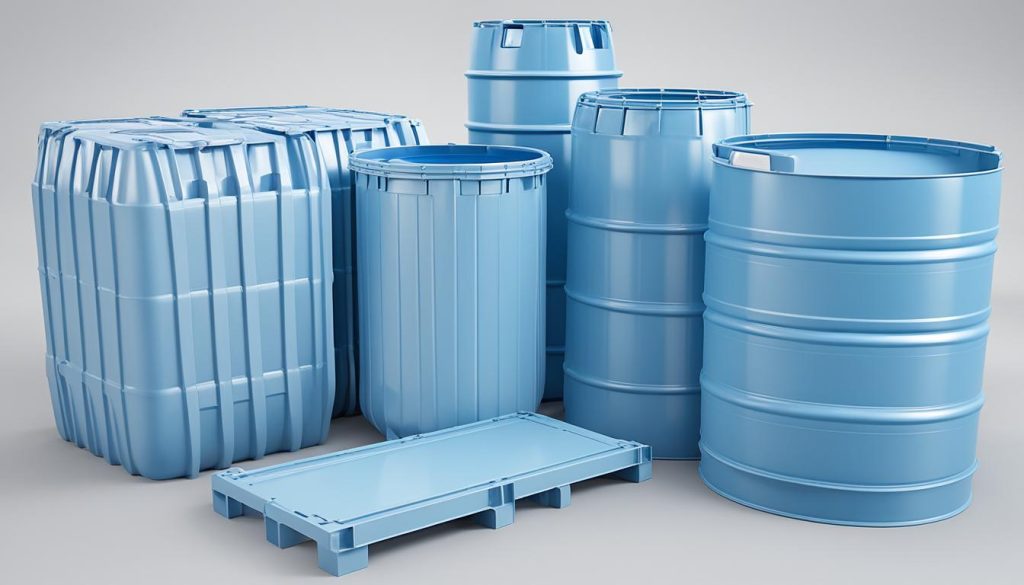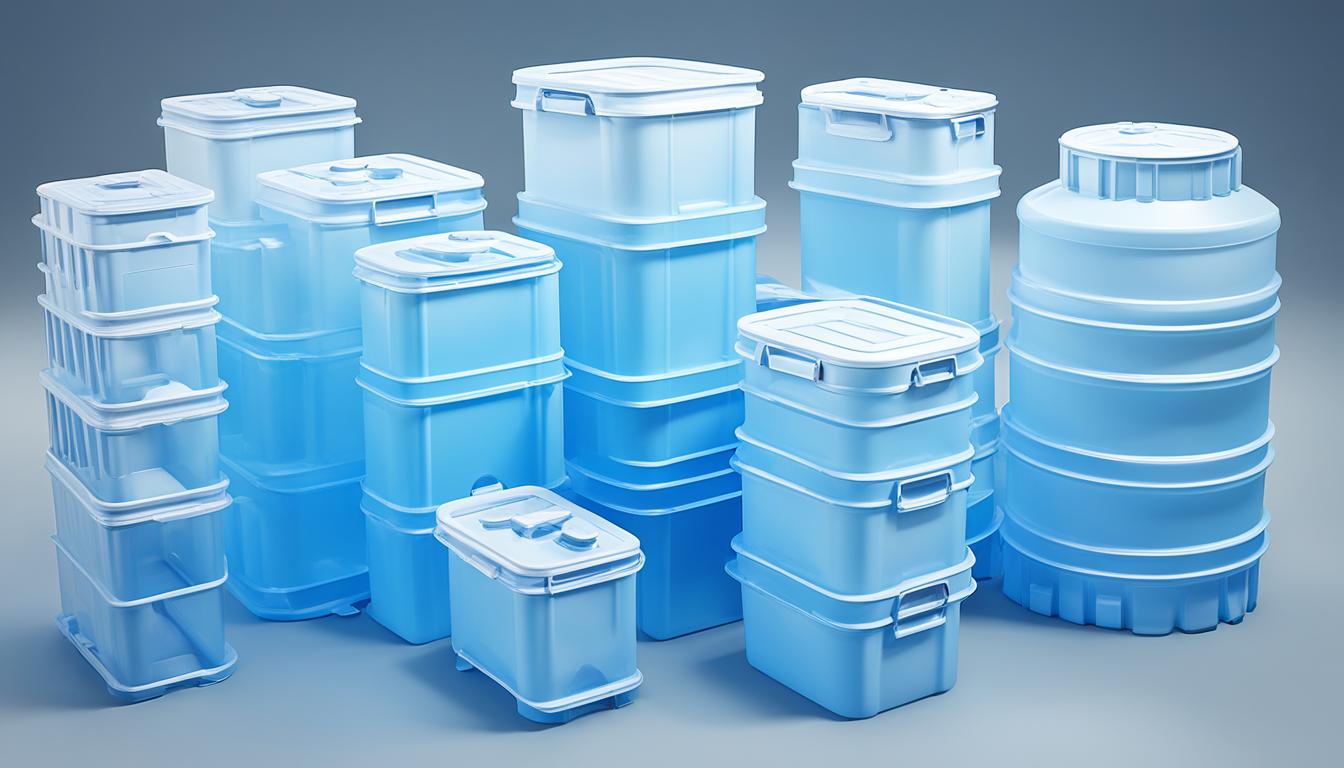As an experienced emergency preparedness advocate, I understand the critical importance of maintaining a reliable supply of clean, potable water. In this article, I’ll guide you through the process of selecting the best water storage containers for stockpiling, ensuring your family’s safety and well-being during unexpected situations. Having a plan for water storage is a fundamental step in disaster planning and survival preparation.
Water is the most essential resource for sustaining life, and when emergencies or natural disasters strike, access to clean water can become scarce. By properly stockpiling water in reliable containers, you can safeguard your household and have peace of mind knowing that you’re prepared for the unexpected. In the following sections, I’ll explore the reasons why water stockpiling matters, the key factors to consider when choosing water storage containers, and the top options to have on hand.
Preparing for the Unexpected: Why Water Stockpiling Matters
In the realm of emergency preparedness, water stockpiling stands as a critical component that can make the difference between survival and disaster. As water is essential for life, having a reliable supply of clean water during times of crisis can be the key to weathering any unexpected event. From natural disasters to man-made crises, the importance of water security cannot be overstated.
Understanding the Importance of Water in Emergency Situations
Water is not just a necessity for quenching thirst; it plays a vital role in maintaining proper hygiene, providing sustenance, and supporting essential bodily functions. In emergency situations, where access to clean water may be limited or disrupted, the lack of this precious resource can quickly escalate into a dire situation. Dehydration, the spread of waterborne illnesses, and the inability to perform basic sanitation tasks can all have devastating consequences if water is scarce.
Factors to Consider When Stockpiling Water
When it comes to building a comprehensive water storage plan, there are several factors to consider. The recommended water quantity for emergency preparedness is typically one gallon per person per day, with a suggested storage duration of at least two weeks. Additionally, the quality of the water being stored is of utmost importance, as it must meet stringent standards to ensure it remains safe for consumption.
Other key considerations include the storage containers used, the proper techniques for maintaining water purity, and the accessibility of the stored water in times of need. By carefully evaluating these factors, individuals and families can develop a water stockpiling strategy that provides the necessary resilience and peace of mind in the face of the unexpected.
“Preparedness is not about fear, it’s about being responsible and protecting the people you love.”
In conclusion, water stockpiling is a vital component of emergency preparedness, ensuring that individuals and communities have access to the essential resource needed to survive and thrive in the face of the unexpected. By understanding the importance of water security and taking the necessary steps to build a comprehensive water storage plan, we can all contribute to a more resilient and disaster-ready future.
Best Water Storage Containers for Stockpiling
Selecting the right water storage containers is crucial for maintaining the quality and accessibility of your emergency water supply. When it comes to stockpiling water, there are several options to consider, each with its own unique features and benefits. In this section, I’ll review the top water storage solutions, including rigid containers, collapsible water storage bags, and specialized water storage tanks, to help you choose the best fit for your needs.
Rigid Water Storage Containers
Rigid water storage containers, such as plastic, metal, or ceramic jugs, are a popular choice for water stockpiling. These containers are durable, easy to stack, and provide a secure, airtight seal to prevent contamination. They come in a variety of sizes, from small 1-gallon jugs to larger 55-gallon barrels, making them suitable for both personal and household use.
Collapsible Water Storage Bags
Collapsible water storage bags are an excellent option for those with limited storage space. These bags are made of sturdy, BPA-free materials and can be easily folded or rolled up when not in use. They’re also lightweight and portable, making them a great choice for emergency kits or outdoor activities. However, they may not provide the same level of protection against potential contaminants as rigid containers.
Water Storage Tanks
For larger-scale water storage needs, dedicated water storage tanks are a reliable solution. These tanks are designed specifically for water storage and are available in a range of sizes, from a few hundred gallons to several thousand. They are typically made of durable materials like polyethylene or steel and can be installed above or below ground, depending on your space and needs.
| Container Type | Capacity | Durability | Portability | Suitability |
|---|---|---|---|---|
| Rigid Containers | 1-55 gallons | High | Moderate | Personal, household |
| Collapsible Bags | 1-100 gallons | Moderate | High | Emergency kits, outdoor activities |
| Water Storage Tanks | 100-10,000 gallons | High | Low | Larger-scale household, community |
When selecting the best water storage containers for your needs, consider factors such as capacity, durability, portability, and suitability for your specific use case. By carefully evaluating your options, you can ensure that your emergency water supply is well-protected and readily accessible when you need it most.

“Proper water storage is an essential part of any emergency preparedness plan. Investing in the right containers can make all the difference in a crisis situation.”
Ensuring Safe and Hygienic Water Storage
Maintaining the safety and potability of your emergency water supply is of the utmost importance. To prevent contamination and ensure your water remains clean and drinkable, I’ll share essential guidelines on how to properly prepare, treat, and store your water, as well as tips for long-term maintenance.
First and foremost, it’s crucial to thoroughly clean and disinfect your water storage containers before use. This can be achieved by washing them with a mild soap and water solution, followed by a rinse with a diluted bleach mixture. Proper sanitation is the foundation for safe water storage, so don’t skip this crucial step.
Next, I recommend treating your water before storing it, using reliable methods such as boiling, chemical disinfection, or filtration. This will help eliminate any potential microorganisms or contaminants, giving you peace of mind that your water is safe to consume when needed. Regular testing and monitoring of your stored water is also advised to ensure its continued purity.



